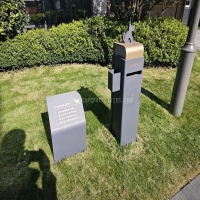Welcome to the website for landscape facilities products and knowledge.
What are the most important considerations for placing the bin in a disaster relief area?
Effective waste management is critical in disaster relief areas to maintain hygiene, prevent disease, and ensure smooth operations. Here are the most important considerations for placing bins in such environments:
1. Accessibility: Bins should be placed in easily reachable locations for both relief workers and affected individuals. High-traffic areas like food distribution points and medical tents are ideal.
2. Hygiene and Safety: Bins must be leak-proof and covered to prevent contamination and pest infestations. Regular disposal and sanitization are essential.
3. Segregation: Separate bins for different waste types (e.g., medical, organic, recyclable) improve efficiency and reduce health risks.
4. Visibility and Signage: Clear labeling ensures proper use and minimizes confusion, especially in multilingual or high-stress settings.
5. Logistics and Capacity: Assess waste generation rates to avoid overflow. Larger bins or frequent collections may be needed in densely populated relief camps.
By addressing these factors, relief efforts can maintain cleanliness, protect public health, and optimize resource allocation during crises.
Related search:

Recommendation
Outdoor cat and dog feces trash can; Community pet trash can; Metal multi-color design